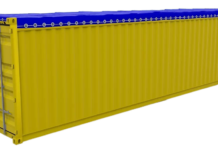As a business owner, you are always looking for ways to increase productivity and efficiency in your manufacturing process. However, finding a solution that works for your business can be difficult.
Some companies have tried to implement new technology into their manufacturing process but found that it simply did not work with their current system. Other companies have watched as competitors who were able to increase their productivity with ways like first article inspection while keeping costs low quickly gained market share and left them behind.
To ensure your business is competitive in today’s marketplace, there are several things you can do to make your manufacturing process more efficient. Read to learn more.
Lean Manufacturing
Lean Manufacturing focuses on reducing waste and increasing efficiency by streamlining manufacturing processes. This can be done by eliminating unnecessary steps, improving workflow, and standardizing processes. Implementing lean manufacturing principles can help you save time and money while improving quality control.
Six Sigma
Six Sigma is another method that can be used to improve productivity in your manufacturing process. This approach emphasizes the importance of quality control by reducing defects and variations in the manufacturing process. Six Sigma can be used to improve nearly any aspect of your business, including customer satisfaction, profits, and employee morale.
Automation
One way to increase productivity in your manufacturing process is to automate as much of the work as possible. There are many different types of automation equipment available, so it is important to research to find the best fit for your company. Automating repetitive tasks can free up your employees’ time to focus on more important tasks.
Training and Development
Investing in employee training and development is another great way to improve productivity in your manufacturing process. Providing employees with the knowledge and skills they need to do their jobs effectively can help them work more efficiently and avoid mistakes. Additionally, offering development opportunities can help motivate employees and reduce turnover rates.
JIT (Just-in-Time) Manufacturing
Just-in-Time (JIT) Manufacturing is a system that optimizes production by only producing items when needed. This system reduces waste by avoiding the overproduction of items that may not be needed immediately or at all. JIT Manufacturing can help you save time and money while ensuring that your customers always receive the products they need when they need them.
Kanban System
The Kanban System is a methodology that helps businesses visually organize their production process to complete tasks more efficiently. This system uses cards or boards to signal when an employee should move on to the next task, which helps keep everyone on track and prevents bottlenecks in the production line. Implementing a Kanban System can help improve communication and collaboration among employees while increasing overall productivity levels.
BPM (Business Process Management) Software
BPM software helps businesses automate, manage, and optimize their processes. It can be used to manage everything from customer relations to supply chain management. Using BPM Software can help streamline your manufacturing process by automating repetitive tasks and providing real-time data analytics.
Continuous Improvement Culture
CI is an ongoing effort to improve products, services, or processes. This approach emphasizes small, incremental changes rather than large, sweeping changes. CI can be applied to nearly any aspect of your business, but it is particularly effective in Manufacturing due to the complex nature of production processes. Creating a Continuous Improvement culture within your organization can help instill a sense of ownership among employees and encourage them to find ways to improve efficiency.
Final Word
Improving productivity in your manufacturing process is essential for sustaining a successful business operation. Implementing lean manufacturing principles, automating repetitive tasks, investing in employee training, and creating a Continuous Improvement culture are great ways to boost productivity levels. By taking these steps, you will be well on your way to streamlining your operation and ensuring long-term success.




































































